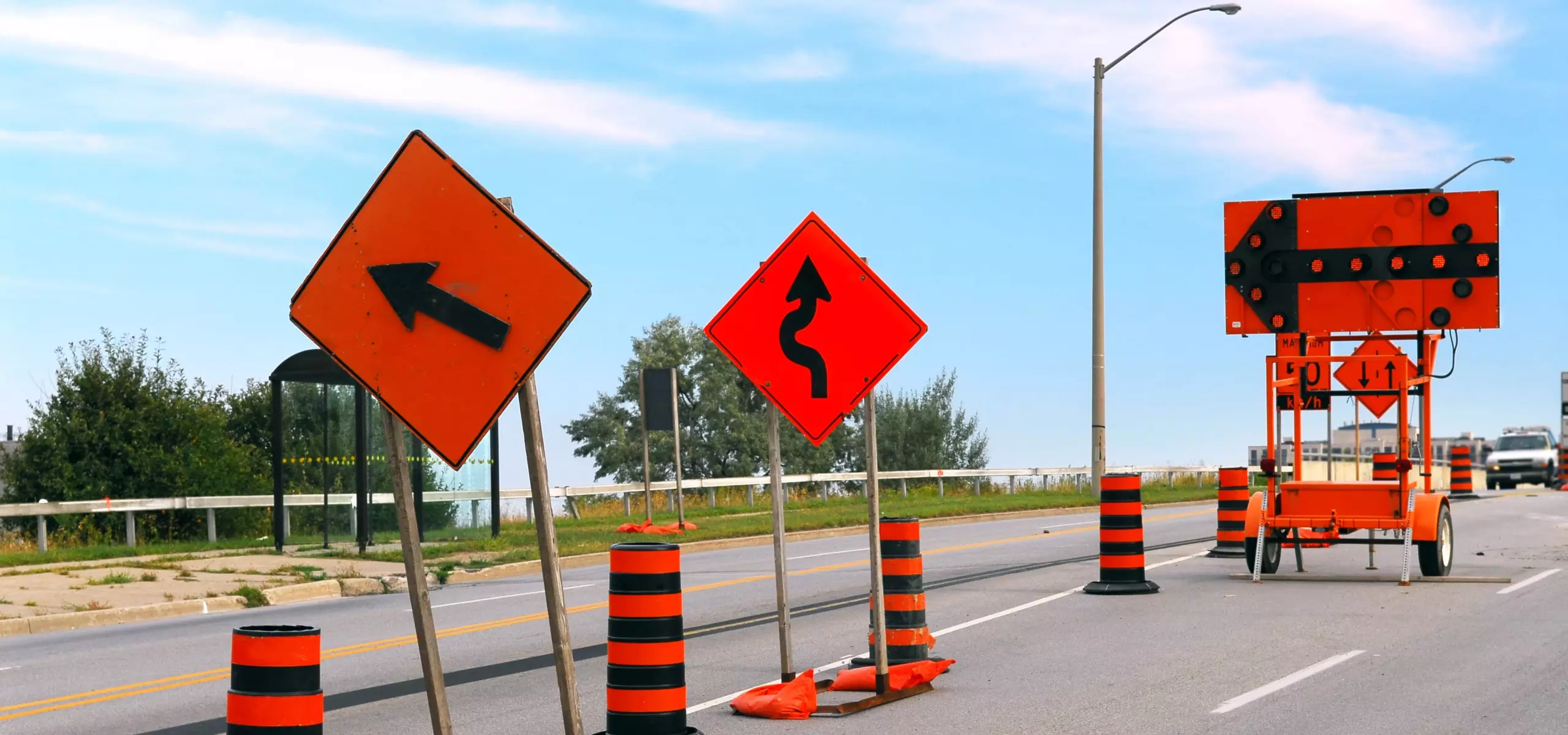
Spring and summer months promise construction zones along America's highways, byways, side streets and main drags. While beneficial in the long run, roadway construction can be inconvenient and quite dangerous unless drivers remember a few basic guidelines.
Drivers are conditioned to respond to colors. Red brake lights, traffic lights and octagons tell drivers to stop. Yellow flashing lights and road signs caution drivers of conditions ahead. And everyone knows what green means. However, many drivers need to be reminded of the fourth, and possibly the most important, color they'll encounter on the road: The color orange on the road means construction zones-enter these zones using extra concentration, caution and common sense. As always, think safety first.
Be Alert. Not everyone is well versed in construction zone driving etiquette, so pay extra attention to your surroundings while in these areas. Continuously scan the roadway for rubberneck drivers, moving equipment, vehicles and workers. Do not use mobile phones while driving in work zones; eliminate driver distractions.
Move over. If there are highway workers on one side of a divided highway, move to the other lane. In many states you are required to move into the lane away from the construction.
Be patient and stay calm. Never allow speeding and impatient drivers to modify the way you drive. Keeping cool in heavy slowdowns will make your drive safer and help keep traffic flowing. Be aware of tailgaters and motorists creating their own lane on the shoulder, but calmly focus on your driving, always leaving yourself enough space between you and the vehicles around you.
Turn on headlights so that workers and other drivers can see you. Be especially alert at night while driving in work zones.
Plan Ahead. When making travel plans, take time to research where construction zones will be and use an alternate route if possible. Construction zones can cause delays, so give yourself extra time if you know you have to drive through a work zone. Maintain adequate fuel to ensure you don't run out of gas, and bring drinks and snacks to keep you and your passengers satisfied as well.
Give trucks room. Because of the length and weight of trucks, they need more room to stop or change lanes, especially in the narrow lanes construction zones often render. If a truck has its turn signal on, assist the driver by moving over or slowing down. While you should increase following distance for all vehicles when driving through a construction zone, remember trucks need nearly twice the time and room to stop as cars.

